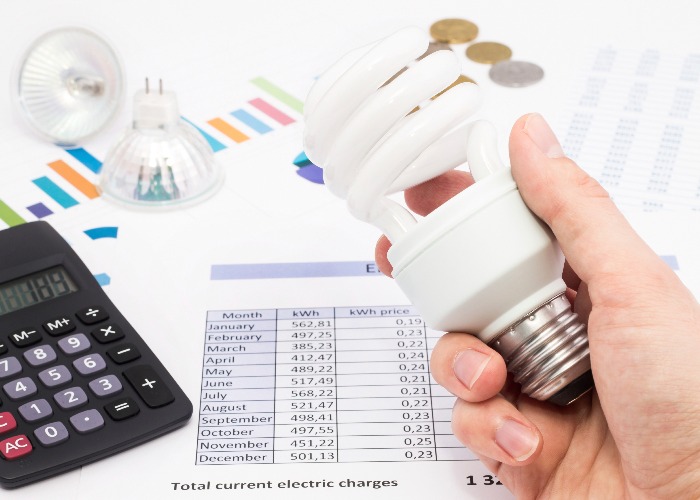
Regulator wants to review the energy price cap every three months instead of every six.
Energy bills, and the rate at which they have accelerated, are at the very heart of the cost of living crisis.
It’s precisely because of the massive jumps in our gas and electricity bills that we have seen awful stories about pensioners spending all day on the bus, so that they don’t have to put their own heating on.
There is likely to be further upset ahead on this front, with suggested changes from the energy regulator meaning that we may see our energy bills increase faster and more regularly in future.
Updating the energy price cap
It all comes down to the energy price cap. Under the current setup, the price cap is reviewed twice a year, in February and August.
If Ofgem determines that the cap needs to be changed, those changes then take effect from April and October respectively.
The downside to this setup, as we have seen already this year, is that there is the potential for enormous price jumps.
Back in April, for example, the price cap increased from £1,277 to £1,971 a year, an increase of a massive 54%.
The expectation is that there will be another significant increase in October too. Analysis from Cornwall Insight has suggested another 32% jump at that point, taking the price cap up to around £2,600.
That’s an extraordinary cost jump, with annual bills more than doubling in the space of six months.
More frequent reviews
Ofgem has now raised the possibility of reviewing ‒ and therefore changing ‒ the price cap on a more regular basis than its current twice-a-year structure.
The regulator has floated the idea of instead reviewing the cap four times a year.
The thinking is that this will allow it to shift the cap more swiftly in response to the prices on the wholesale markets so that, when the prices suppliers pay for our gas and electricity drop, our bills will fall more rapidly.
The counter to that is true also; our bills will move upwards more quickly when the wholesale costs increase.
Rather than two bill shocks a year, we may see four smaller bill increases. So we still end up paying more, but the size of the increases are less shocking than under the current system.
The proposed change to the price cap reviews would come into force in October, meaning the next review would kick in from January 2023.
It’s worth pointing out that the energy price cap, and the fact that it is reviewed so infrequently, was blamed by some within the energy industry for the astonishing number of suppliers going bust over the last few years.
The argument goes that if Ofgem had been able to increase the cap more rapidly then, some of those suppliers may have been able to survive.
In debt to suppliers
The prospect of more frequent energy bill increases is not exactly enticing for anyone, but it will be a particular concern to those who are already in debt to their supplier.
New research from price comparison site uSwitch has found that in total Brits are currently £1 billion in debt to suppliers, with this debt balance having doubled over the last year.
Around one in four households are in the red with their energy firm, owing the best part of £200 on average.
This comes at a time when suppliers are also under suspicion of using the April price cap rise to increase direct debits more than necessary.
Ofgem has confirmed that it has ordered a number of unnamed suppliers to explain their debit increases, having already used a blog post back in April to warn that it was aware that some suppliers were acting in this immoral way.
Money’s too tight to mention
There is a certain logic to the idea of more frequent reviews to the energy price cap.
If these frequent checks work as they should ‒ and I appreciate that’s a big if ‒ then that should mean that price rises are smoothed out somewhat, rather than the current situation where we have massive bill shocks looming on the horizon.
However, it must also mean that Ofgem is swift to cut the price cap when wholesale costs drop too.
Besides, given the difficulties millions are facing, the idea of more frequent bill rises sticks in the craw.
The energy price cap was always something of a safety net, a way to prevent suppliers from milking those customers who have in the past been apathetic about switching to a new fixed tariff.
The trouble is that fixed tariffs today are now, incredibly, more expensive than the price cap meaning that it’s actually not necessarily a great idea to move away from your supplier’s standard tariff.
It’s therefore crucial that alongside reviewing better ways for the price cap to operate, Ofgem also focuses on how it can help suppliers to deliver fixed-rate tariffs that people will actually want to sign up for.